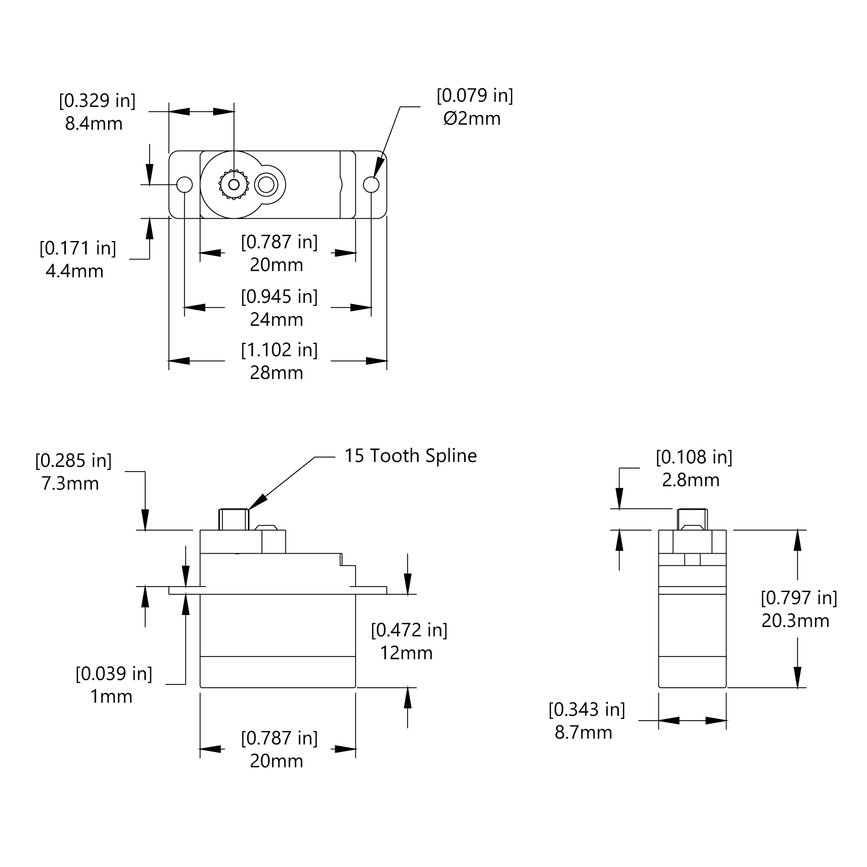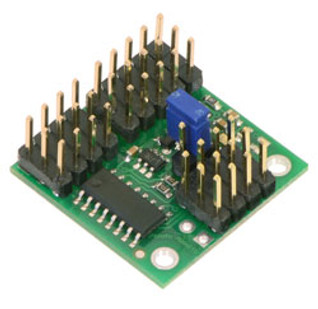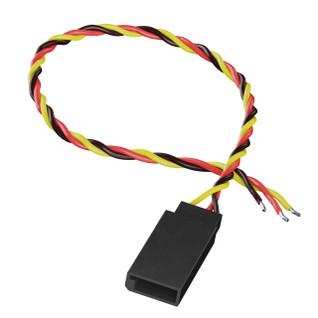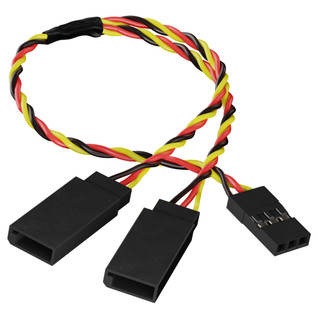HS-40 Servo
SKU:Hitec's research department and engineers work tirelessly at developing economical servo technology that outperforms the competition and the HS-40 nano analog servo delivers just that. With a three-pole cored motor and resilient nylon gears, this affordable servo is a dream come true for micro aircraft, sailplane and helicopter pilots.
How Far Will This Servo Rotate?
The answer to this question is partially dependent on what you are using to control the servo.
Click for a quick video explanation.
With an Average Radio System:
93°
Your average transmitter and receiver will output a relatively narrow PWM signal range.
Radio System + Travel Tuner:
195°
Adding a Servo Travel Tuner to your radio system setup will allow you to achieve wide PWM signal ranges.
Wide Signal Controllers:
195°
Controllers such as the Servo Commander, Arduinos, and Raspberry Pi servo hats can usually send a wide signal.
Specs
| Output Shaft Style | A15T Spline |
|---|---|
| Voltage Range | 4.8V - 6.0V |
| No-Load Speed (4.8V) | 0.12 sec/60° |
| No-Load Speed (6.0V) | 0.10 sec/60° |
| Stall Torque (4.8V) | 8.4 oz-in (0.60 kg.cm) |
| Stall Torque (6.0V) | 10.5 oz-in (0.75 kg.cm) |
| Max PWM Signal Range | 615-2495 μsec |
| Travel per µs (Stock) | .104°/μsec |
| Max Rotation | 195° |
| Pulse Amplitude | 3-5V |
| Operating Temperature | -20°C to +60°C |
| Continuous Rotation Modifiable | No |
| Direction w/ Increasing PWM Signal | Clockwise |
| Deadband Width | 8µs |
| Motor Type | Cored Metal Brush |
| Feedback Style | 5KΩ Potentiometer |
| Output Shaft Support | Outer case serves as bearing |
| Gear Material | Nylon |
| Wire Length | 6.29" (160mm) |
| Weight | 0.17oz (4.8g) |
| Wire Gauge | 28AWG |
| Servo Size | Nano |

























